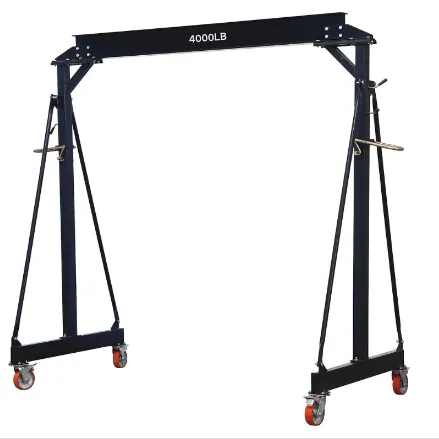Guidelines for Efficient Machinery Relocation in Industrial Settings
The Importance of Machinery Relocation in Modern Industry
Machinery relocation is an essential aspect of modern industrial operations. As businesses grow and change, the need to move machinery efficiently and safely becomes paramount. This process, which involves relocating equipment from one site to another or within the same facility, is vital for optimizing productivity, enhancing operational capabilities, and adapting to changing market demands.
Understanding Machinery Relocation
Machinery relocation is not merely about moving heavy equipment from point A to point B. It encompasses a range of activities, including disassembly, transportation, reassembly, and installation. Proper planning and execution are crucial components of the relocation process to ensure minimal disruption to production schedules and to maintain the integrity of the machinery.
The reasons for machinery relocation can vary significantly across different industries. Companies may need to relocate machinery due to facility expansions, downsizing, equipment upgrades, or geographic relocation. Regardless of the reason, understanding the intricacies involved in this process can help businesses navigate the challenges effectively.
The Planning Phase
The planning phase is critical in the machinery relocation process. It begins with conducting a thorough assessment of the current equipment and the new location. This includes evaluating the condition of the machinery, identifying any potential hazards during the move, and determining the logistical requirements for transportation.
Collaboration among various departments within a company is essential during this phase. Engineers, project managers, and safety personnel must work together to develop a detailed plan that addresses the technical aspects of the relocation while ensuring compliance with safety regulations. Additionally, timelines and budgets need to be established to manage the project efficiently.
Execution of the Move
Once the planning phase is complete, the execution of the move can begin. This stage involves disassembling the machinery safely, labeling and organizing components, and preparing them for transport. Specialized equipment like cranes, forklifts, and trucks are often needed to handle heavy or oversized machinery.
machinery relocation

Safety is a paramount concern during this process. Workers involved in the relocation must be trained in proper lifting techniques and the use of machinery to prevent accidents and injuries. Implementing safety protocols helps mitigate risks and ensures that equipment is moved without damage.
Reassembly and Installation
Upon reaching the new location, the reassembly and installation process begins. This stage also requires careful attention to detail. Each component must be reassembled according to the manufacturer's specifications, and testing should be conducted to confirm that the machinery operates as intended.
Often, companies will utilize the expertise of skilled technicians or equipment specialists during this phase to ensure a smooth transition. Their experience can prove invaluable in troubleshooting any issues that arise during the installation process.
Benefits of Machinery Relocation
Successful machinery relocation can yield numerous benefits for a business. First and foremost, it allows for increased efficiency. By strategically relocating equipment, companies can enhance workflow and reduce unnecessary downtime. It can also improve space utilization in facilities, paving the way for future expansions or changes in production lines.
Moreover, modern industries must remain agile to respond to changing market conditions. Machinery relocation enables businesses to adapt their operations quickly, whether by consolidating production or expanding capacity to meet rising demand.
Conclusion
In conclusion, machinery relocation is a complex yet essential process that can significantly impact a company’s efficiency and growth potential. With careful planning, execution, and a focus on safety, businesses can successfully navigate the challenges associated with relocating their machinery. As industries continue to evolve, the importance of effective machinery relocation will remain a key element in ensuring operational success and maintaining a competitive edge.
-
Unlock Seamless Relocation with Our Heavy Equipment Moving ExpertiseNewsJun.06,2025
-
Unleash Unrivaled Flexibility with Our Adjustable Gantry CraneNewsJun.06,2025
-
Unleash Heavy-Duty Efficiency with Our Industrial Gantry Crane SolutionsNewsJun.06,2025
-
Revolutionize Steel Handling with Our Magnetic Lifter RangeNewsJun.06,2025
-
Master Equipment Mobility with Premium Machinery Mover SolutionsNewsJun.06,2025
-
Elevate Your Material Handling with Magnetic Lifter TechnologyNewsJun.06,2025
-
YS Permanent Lifting Magnets: The Smarter Way to Handle SteelNewsMay.22,2025
